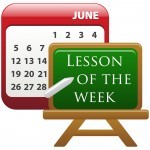Lesson of the Week: Joe Shull- Posture, Setup, Routine, and Takeaway
By Wayne | Videos: Lesson of the Week

Joe came to the lesson with a specific wish: he wanted to fix his backswing, which he knew was putting him into poor position at the top and making the downswing difficult to manage. I first suggest a less slumped posture with the hands a bit higher and looking at him face on I wanted both his weight and his hands more centered. Joe’s grip had gotten quite strong, but he couldn’t see it because his hands were so forward at address, and even more forward after squeezing the grip and forward pressing. Getting into this setup position is crucial for Joe to be able to get the club up on plane and the face less closed in the first part of the backswing, as he needs to maintain the bend in the back of his left wrist from address to the top of the swing. Joe’s overly closed clubface and low to the ground takeaway cause his right shoulder to eventually crunch up and get stuck at the top, and there is no way the right arm is going to work properly from there. We also go over a routine that will get him into the proper setup each time, an important item many players disregard even though the prospect of changing their swing for the better depends on it.
Continue reading

